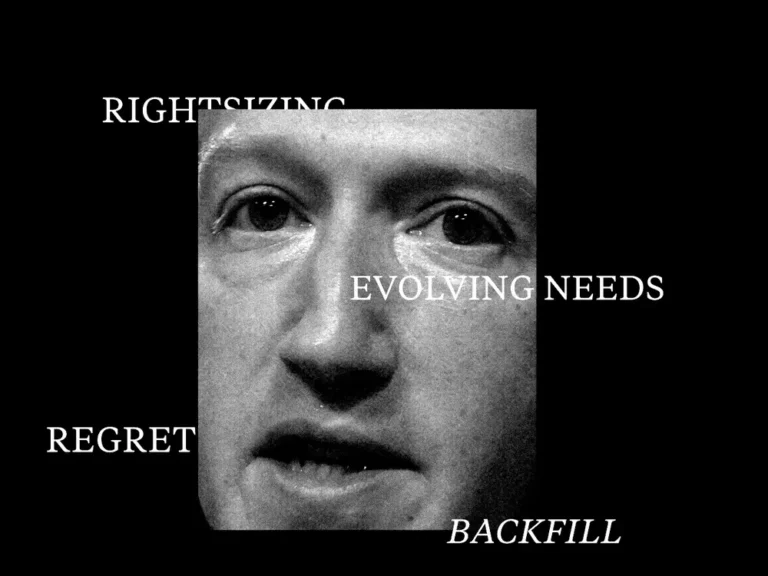America’s corporate gerontocracy

Joe Biden stepped aside. A lot of aging CEOs should do the same.
Two or three years ago, it’s hard to pinpoint exactly when, employees at an investment firm started to notice something was wrong with their aging CEO.
The executive, an octogenarian who’d founded the firm decades earlier, was trying to make nonsensical trades that employees had to scramble to cancel, a senior employee said. The CEO’s relationship with the truth was growing ever more elastic. They’d forget what happened in meetings. Most concerningly, some major clients were abruptly pulling out after taking phone calls with the CEO.
It was a boutique firm, just half a dozen or so staffers, with a couple hundred million dollars in assets under management. There was no board of directors to consult, and the staff was terrified of confronting and getting on the executive’s bad side. But to the employee, the reality was inescapable: The CEO was experiencing significant age-related cognitive decline.
“We lost our biggest client, and we lost some other sizable clients,” the employee said. “That’s when we decided they can’t talk to anyone anymore, which is not easy when their name is on the door.” The employee, along with several other sources in this story, spoke on the condition of anonymity because of the extreme sensitivity of the subject and provided screenshots of messages and other material corroborating their accounts.
Since President Joe Biden’s disastrous debate performance against Donald Trump in June, America has been in conversation about the deleterious effects of aging. Much of it has focused on the US government’s gerontocracy — a generation of political leaders, including Supreme Court Justice Ruth Bader Ginsburg and Sen. Dianne Feinstein of California, who refused to relinquish the reins of power even in the face of physical infirmity or mental deterioration.
Less discussed, however, is a parallel crisis in corporate America: a wave of aging business leaders who refuse to step aside.
In 2000, one-eighth of Americans were over 65; that proportion is set to grow to one-fifth by 2040. The average retirement age is similarly increasing: to 62 in 2024 from 57 in 1991. CEOs, too, are getting older. In 2008, the average age of a CEO in an S&P 1500-listed firm was 54. It’s risen each year since, to nearly 59 in 2023.
A rising corporate gerontocracy puts countless businesses at risk. Employees, boards of directors, accountants, and psychologists alike are scrambling to answer an increasingly urgent question: How can more CEOs take a page out of Biden’s book and know when to step down?
The older a CEO becomes, the worse they are at their job.
That’s the conclusion of a study published in 2023 by Rosemond Desir and Scott Seavey, two accounting professors at Florida Atlantic University. Using public data from 1992 to 2018, they assessed the relationship between a CEO’s age and their “managerial ability,” as measured by how they turned company resources into revenue and profit. “A 10% increase in CEO age is associated with a 1.9% decrease in managerial ability,” they wrote. The dropoff grows steeper in later years; the difference between a 45-year-old’s and a 60-year-old’s performance is much smaller than that between a 60-year-old and a 75-year-old.
The academics cautioned that the effects weren’t the same across the board. In fast-paced, rapidly evolving fields like technology, this effect was particularly pronounced. In heavily regulated industries like utilities or manufacturing, it’s a different story. CEOs in these firms “have a much longer-term focus and are much more stable and much more concerned with reducing costs,” Seavey told me. For these industries, “the experience of older CEOs tends to outweigh any cognitive decline from the aging.”

As we age, our brains shrink. Gray matter starts to atrophy. We slow down. Cognitive decline, however, is far from uniform; it tends to manifest at different speeds and in different ways. One of the most insidious can be the gradual loss of what’s called executive function. “Executive function is oftentimes thought of as reflecting decision-making capability. It goes beyond that,” said Dr. Mark Fisher, a professor of neurology at the University of California, Irvine. “It also involves the organization planning, multitasking, retrieving information from working memory.” Where other issues — like memory loss or struggles with language — are easy to identify, executive dysfunction can manifest more slowly, as erratic decision-making.
One of the most notorious cases is that of Sumner Redstone, the leader of a $40 billion media empire including CBS and Viacom whose increasing physical and mental infirmity before his death in 2020 at 97 spawned numerous legal disputes.
Such deterioration, unchecked and at its most extreme, can prove fatal for businesses.
When the CEO of a European startup building hardware for stores started to deteriorate, some employees thought he was testing them or deliberately screwing with them, a senior worker there said. His unusual behavior — demanding workers work overtime all weekend one moment, forgetting what had repeatedly been discussed in meetings the next — prompted a gradual exodus, until there was only one other worker left.
That worker told me they were forced to effectively run the business single-handedly — managing relationships with suppliers and external contractors while handling the founder’s slow unraveling.

The worker initially despaired as they tried to fix things, before a grim fatalism set in. “Today, basically I have come to terms that I have to meet him where he is, and there is nothing I can do to improve this,” the person told me.
As the business bled cash and talent, the founder was eventually convinced — with his wife’s help — to prepare to wind it down with the worker’s assistance.
At the boutique finance firm, the ailing CEO kept coming into the office, even as their employees progressively walled them off from client meetings and sensitive duties. The CEO didn’t seem to notice.
“It’s part of their routine,” the employee there said, adding, “They know that you get up, and you get dressed, and you go to the office.”
For many executives, the rationale for not retiring is simple: They don’t want to, and no one can make them.
In 2010, Barclays surveyed 2,000 high-net-worth individuals about their attitudes toward retirement and found that 60% of respondents indicated they were determined to never stop working, despite their age. “These ‘Nevertirees’ are very actively engaged in what we would traditionally regard as their retirement years; continuing to work, starting businesses and taking on new projects,” the bank said. “For many, their work is their passion, and to stop would be unthinkable.” Respondents with more than £10 million in assets were more likely to say that than those with £1 million to £2 million. For many, the more wealth and power they have, the more they want to work to keep it.
A job can be a crucial part of someone’s identity, especially if they run the company or if their company even bears their name. For executives, retiring can feel like losing a part of the self.
But if anything, studies suggest retirement is “slightly more likely to have positive effects on people’s health” because of reduced stress and increased free time for looking after themselves, said David Ekerdt, a professor emeritus of sociology and gerontology at the University of Kansas. A few, though, “may fall apart without that structure.”
Notably, many of us remain oblivious to our growing limitations as we age. Olivia S. Mitchell, an economics professor at Wharton who has studied retirement, found in her research that even as people’s memory and broader mental acuity declined with age, their own assessment of their memory actually increased.

“There’s a rising gap between actuality and people’s self-confidence that can pose a problem — both to the individuals themselves and to the organizations they’re embedded in and need to direct and lead,” she said.
Still, some leaders eventually get the message. A lawyer at a three-person law firm in Southern California saw her nearly 80-year-old boss drastically deteriorate in the year she worked there. In one meeting, she recalled, a prospective client was discussing filing a lawsuit against her employer because her office had no place for her to breastfeed. The aging attorney responded, “Why can’t you just do it in the bathroom?” For someone who had been practicing employment law for more than 50 years, this was an astonishing question. “All of a sudden it went from being like, OK, things are a little dicey, to suddenly this man cannot practice law,” the lawyer said.
He ultimately realized he couldn’t keep going, closed up shop, and died a few years later.
Though their ranks are on the rise, fading executives aren’t a new issue, and historically businesses turned to a blunt instrument to prevent it: mandatory retirement policies.
The practice was largely banned in the United States decades ago, but carve-outs exist for several professions, including pilots, air-traffic controllers, and federal law-enforcement officers. They also still exist at some corporate firms, but many — such as Chevron and Caterpillar — have waived their policies, loathe to lose top talent.
Given their findings of gradual and nuanced performance declines among executives, Seavey and Desir also caution against retirement mandates. “It’s more on the board to be aware of how their CEO is,” Seavey said.

Of course, many people remain extremely capable deep into old age: Warren Buffett continues to earn plaudits for his management of Berkshire Hathaway at 93, while Rupert Murdoch held on to News Corp. until he was 92. And older workers, both above and below the traditional retirement age, already face unwarranted discrimination in the workplace.
Fisher, the neurology professor, said he’d like to see cognitive tests that can detect degeneration become a normal part of routine health exams, especially for executives. (Some professions, including pilots, are already sometimes subjected to mandatory cognitive exams.)
In that sense, he added, the Biden imbroglio has been a positive step forward — the adverse effects of age are out in the open. There’s no easy answer though, particularly in smaller companies without boards of directors who can step in or formal governance procedures to handle these matters. Our inevitable diminishment and mortality — and our reluctance to accept it — is one of life’s bitter constants.
The finance firm took a different approach: It played the waiting game.
As their founder’s condition deteriorated, workers took on a quasi-caretaker role. They began ordering food to the CEO’s house to ensure they were eating properly, buying them clean clothes, calling cars to take them to and from the office, setting up healthcare meetings, and coordinating with their out-of-town family.
“It got a little weird because we had to step in on a personal level,” the employee said. “I mean, this is someone who signs your paycheck.”
The founder is now receiving more frequent medical care, and has been coming into the office less often over the past few months. A succession plan has been prepared.
“The way I’ve been positioning it to clients is saying: ‘Oh, well, they’ve done this for a long time and they’re not really as involved in the day-to-day as they used to be. And they come into the office not as much as they used to.’ And every client has said, ‘I completely understand,” the employee said. “I’m telling them without telling them.”






